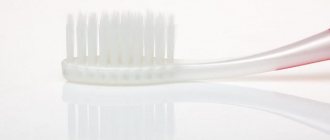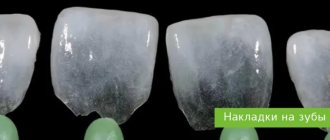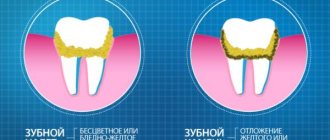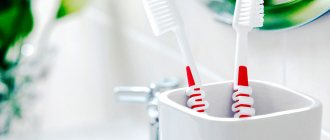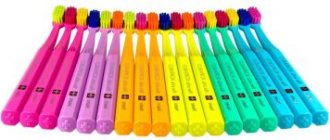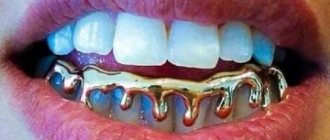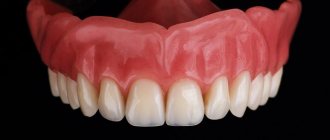Dental floss is an oral hygiene product that helps clean the interdental spaces. It is in these areas that the most plaque and food debris accumulate, which create a favorable environment for the development of caries. No brush can fit into these spaces, so flossing is not an alternative, but an important addition to your daily hygiene routine to keep your smile healthy and beautiful. To choose the one that's best for you, weigh the pros and cons of both types of waxed and unwaxed dental floss.
What is dental floss used for?
Floss easily copes with the difficult task of cleaning the interdental spaces. This hygiene product is especially recommended for people with crowded teeth and those undergoing treatment with braces. Timely removal of residues prevents the development of caries and gum disease. Many people believe that a toothpick is sufficient for this purpose. Dentists have a unanimous opinion on this matter: a toothpick, unlike floss, only harms the teeth.
Lanshina Natalya Viktorovna
hygienist at pediatric dentistry “Zubrenok”
The difference between dental floss and a toothpick is fundamental. Properly selected dental floss, when used correctly, removes plaque and food debris from the interdental spaces and does not injure the oral mucosa and the ligaments that hold the tooth in the bone. This is a means of dental care, prevention of caries and periodontal diseases. A toothpick is used to remove food stuck between teeth, in cavities, or under the gum. It injures the gums and ligaments of the tooth, leaving microbial plaque intact. People who use a toothpick have some kind of unresolved dental problem, a chronic disease in the oral cavity that requires emergency dental care
Scope of application
Dental floss is a useful replacement for a toothpick. If a wooden stick often gets stuck, leaves splinters and even injures the enamel, then floss is recommended by dentists as an effective and safe method of hygiene. They need to be treated before bed to prevent bacteria from having a nightly feast and ruining your smile. If during the day we have a lot of reasons and opportunities to erase plaque, then at night no one does this. Therefore, it is better to floss once a day before bed.
Floss performs several important functions:
- Prevention of tartar formation;
- Cleaning interdental areas and preventing caries;
- Disinfection of interdental areas and prevention of gum inflammation (this is achieved with the help of antiseptic impregnations);
An alternative to dental floss can be an irrigator, but it is significantly more expensive.
What dental floss is best to use?
The choice depends on the characteristics and condition of your teeth. First of all, we recommend deciding on the shape of the dental floss.
- Round floss is designed for normal and wide spaces between teeth.
- Tape floss is recommended for those who have gaps between teeth - trema and diastema.
- Flat floss is suitable for people with narrow interdental spaces.
The best dental floss is the one that is perfect for you. The health of your teeth and gums depends on the correctly chosen form. A small thread diameter will make cleaning ineffective, and a wide thread can injure the gums. If in doubt, consult your dentist about which dental floss is best for you.
Lanshina Natalya Viktorovna
hygienist at pediatric dentistry “Zubrenok”
The choice of dental floss should be individual. The hygienist or dentist knows all the nuances that need to be taken into account. Waxed and flat threads penetrate more easily into hard-to-reach places in the presence of orthopedic structures and crowded teeth. Unwaxed - better clean the contact surfaces of teeth from food debris and accumulation of bacteria. This type of floss is recommended for patients who regularly take care of their teeth, have a relatively healthy mouth, and do not have many fillings or crowded teeth. Threads that swell under the influence of saliva, as well as round cross-section, are characterized by increased atraumaticity. They clean wide interdental spaces well. Flosses are impregnated with deodorizing components and medicinal additives to fight bacteria and inflammation.
Dental floss can be made from natural material - silk (it is not very durable and is quite rare) and from artificial material, such as nylon or nylon.
Pros and cons of unwaxed thread
Fibers that do not have a wax coating, penetrating into the spaces between the crowns, bifurcate and absorb more plaque. This happens because their absorption capacity increases and they capture a larger surface of the organ. If the patient suffers from crowded teeth, it is recommended that he use flat fibers. Due to their slight thickness, they will penetrate even into tight spaces. The round cross-section of the floss is suitable for caring for wide intermediate spaces. The increased volume of fiber makes it possible to reach the side zones and clean them efficiently.
If the dirt is old and dense, it is better to remove dental plaque in the dentist’s office. The doctor will determine which technology to use for cleaning. The characteristics of the oral cavity, concomitant diseases, and the degree of contamination will be taken into account. It is important to choose an experienced hygienist and a modern clinic with new equipment.
Waxed dental floss
Waxed dental floss has a smooth surface, making it easy to glide between teeth. We recommend it for those who are just starting to use dental floss: the risk of gum injury is significantly reduced. Waxed dental floss is durable, does not tear, and has a long shelf life - from 5 years. The only drawback: impregnated floss does not remove plaque very well - it is smooth and quickly slips in the interdental spaces.
What types of impregnations are there?
- Chlorhexidine - antibacterial, disinfecting effect of Curaprox DF 820.
- Herbal extracts help gums stay healthy.
- Potassium nitrate - caries prevention PresiDENT Sensitive.
- Menthol, mint - fresh breath Donfeel UF-623.
The impregnated mini-floss is convenient to carry with you - even in a handbag it does not take up much space (Donfeel Dental Floss mini-floss). The price of this thread is lower, since it is not very long.
Differences
In the floss production process, synthetic materials (nylon, nylon or acetate) are used, less often natural silk. A thread may consist of one or more fibers.
The difference lies in the method of additional surface treatment; products can be:
- impregnated with beeswax;
- raw threads.
How are they different from each other? Waxed floss is often impregnated with sodium fluoride , which has a preventive anti-caries effect, and menthol, which deodorizes the oral cavity.
Fluorine and chlorhexidine, used more often in the manufacture of unwaxed products, have a bactericidal effect and serve as a softening agent for the thread: in terms of sliding speed, such a product is more reminiscent of floss impregnated with the waste product of bees.
Are there any contraindications for flossing?
Although reviews from those who floss regularly say that it improves their daily hygiene, flossing is not for everyone. Dental floss has its own contraindications:
- the presence of crowns and (or) bridges - floss can only be used with the permission of the treating dentist, as there is a possibility of damaging the dentures;
- caries, especially with large cavities and significant destruction of hard tissue - floss can cause bleeding if it gets caught on the edge of the cavity; it can be used only after treatment, when the gums have healed;
- gum disease - use floss only after consulting a periodontist! Especially if you have loose teeth;
- Age up to 8 years - a high risk of injury to teeth and gums, and the child will not be able to floss on his own.
Remember: flossers and threads in a spool are intended for one-time and strictly individual use only! Always throw away the used floss or flosser and do not allow anyone other than you to floss. Also, flossing cannot replace brushing and paste cleaning. It is an additional means of hygiene.
General advantages and disadvantages
Don't be fooled by flossing: they also have disadvantages. But most often problems occur due to improper use. It is worth considering both the pros and cons:
Pros:
- Cleans the interdental space that is inaccessible to a regular brush.
- Floss is easy to use; you don’t need any special skills to use it.
- Available to everyone, you can purchase it in almost any store.
- You can use it from anywhere. You don't need paste or water.
Minuses:
- An incorrect movement can damage the gums and create a risk of infection.
- Frequent use threatens damage to tooth enamel. This, in turn, can lead to various consequences, including caries.
Anna LosyakovaDentist-orthodontist
The floss itself is not dangerous, but its improper use can harm your teeth. In all other cases, flosses bring only benefits. And one more thing: make sure that you are not allergic to the material from which the waxed dental floss is made.
Improper use of thread can cause bleeding
In the video, the doctor talks about the benefits and disadvantages of dental floss:
Detailed instructions for use
Those who regularly floss will confirm that cleaning between teeth is not difficult.
Carrying out this procedure does not take much time, you just need to master the technique:
- Unwind a piece 35-40 cm long from the reel (this length is enough for one procedure).
- Wrap most of it around the middle finger of one hand, and the remaining small part around the same finger on the other hand. A gap of 5-7 cm in length should remain unwound.
- To treat 1 tooth, it is enough to use a piece of only 2-3 cm. With a free finger, this piece is grabbed, stretched and carefully inserted into the gap almost to the gum.
- The floss is pressed against the surface being treated.
- Cleaning is performed in the following directions: from bottom to top on the lower jaw; to the cutting edges - on the chewing surface; from top to bottom on the upper jaw.
- Having processed one of the gaps, the segment changes. Make a turn on each finger (the used part is wound on the finger with less thread, and unwinded one turn from the other). The opposite side should be cleaned with a clean piece.
- The remaining gaps are processed using the same principle.
Tip: to achieve maximum cleansing effect, you must perform each movement at least 7 times for each tooth unit.
The video describes in more detail the correct use of interdental floss.
Contraindications for use
Despite the fact that dental floss is an excellent assistant in the matter of oral hygiene, its incorrect and thoughtless use can cause considerable harm to your teeth.
There are a number of dental ailments for which the use of floss is strictly contraindicated:
- Caries. When cleaning the interdental space with dental floss in places where there are cavities, there is a danger that a piece of the tooth may break off. If left unattended, it will continue to deteriorate due to daily friction from the floss.
- If you have crowns and bridges in your mouth, dentists recommend choosing a thread more carefully. Give preference to threads specially made for people with artificial teeth - superfloss - an invention that combines several types of threads for different types of teeth.
- Bleeding gums. Floss can injure weakened gums and introduce infection into open wounds, resulting in an inflammatory process that will require specialist intervention.
The benefits and harms of using hygiene products
Floss as a hygiene product has a lot of advantages: it is good as a tool for cleaning teeth in hard-to-reach places where a toothbrush cannot penetrate, it protects the oral cavity from harmful bacteria, it is affordable and suitable for children and adults. It is impossible not to mention the disadvantages:
- if used insufficiently carefully, you can injure tender gums, which will result in an inflammatory process, which, in the absence of qualified medical care, can result in tooth loss;
- due to frequent and too vigorous brushing, gums may begin to bleed;
- Dentists consider periodontitis a contraindication for flossing, so if you notice blood, flossing should be stopped;
- floss is not an independent hygiene product; it should be used in combination with a toothbrush, toothpaste and mouth rinse - this is the only way to maintain a snow-white smile;
- experts note that in their practice there are cases of partial or complete destruction of diseased teeth due to the use of floss, so before you buy floss in a store, check with your dentist about the advisability of its use.
Sources:
- https://www.zdoroviemed.ru/stati/kak-pravilno-polzovatsya-zubnoj-nityu-poshagovaya-instrukcziya/
- https://24stoma.ru/zubnaya-nit.html
- https://dr-zubov.ru/krasota-i-uxod/sredstva/zubnye-niti/kak-pravilno-i-bezopasno-polzovatsya.html
- https://dentamed.club/gigiena/profilaktika/kak-polzovatsya-zubnoy-nityu.html
- https://MikDent.ru/estetika/uhod/kak-polzovatsya-zubnoj-nityu.html
- https://familystr.com/eto-interesno/poleznie-soveti/kak-polzovatsya-zubnoj-nitju/
How to choose the right floss
First of all, pay attention to the quality of the product. If a certified product is important to you, then purchase floss in pharmacies. High-quality products are distinguished by natural materials and are made on a silk base (waxed or unwaxed). They do not get stuck between the teeth and do not tear prematurely.
If this is a fake, then there can be no talk of any silk threads. The floss material is nylon or nylon. The main difference between the best quality brand and a fake is the price and place of sale. Low-quality floss can be sold anywhere except pharmacies.
At what age are children allowed?
A child can use floss independently no earlier than 10 years old, but you can start getting acquainted with it much earlier.
First, parents themselves must clean the interdental spaces in the child’s mouth, and over time teach the child to carry out this procedure independently. However, some dentists do not recommend using floss before the age of 12, and explain this by the fact that:
- a child’s mucous membrane is very delicate and can be easily injured;
- not all milk teeth have been replaced by permanent ones;
- the child may make sudden movements with the floss, which will cause bleeding gums and inflammation.
Important! The child should carry out the first few independent procedures for flossing his teeth under the supervision of his parents.
